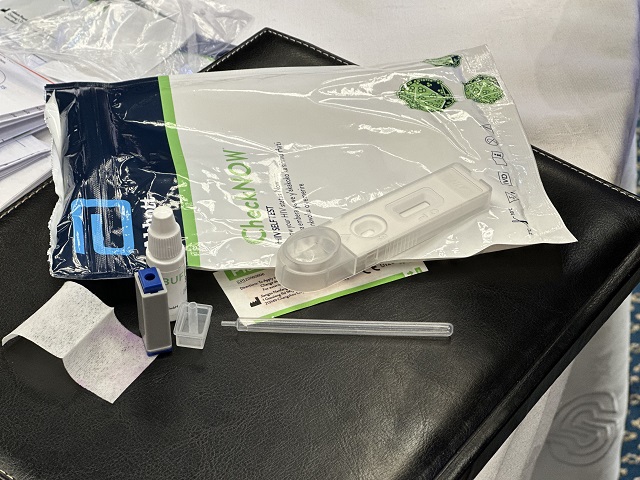
Kampala, Uganda | THE INDEPENDENT | Distributing self-test kits through secondary individuals who may not necessarily be health workers has been found to be effective in luring more men into getting tested for HIV. This is according to the results of a study done by researchers at Busitema University where they found more men to be comfortable receiving kits from their peers than visiting health facilities.
According to Prof Joseph Matovu, the lead researcher from Busitema University Faculty of Health Sciences, they tested the approach using fishermen in Buvuma and Kalangala islands considering the fact that the government struggles to have them consistently tested despite being one of the key populations in which HIV prevalence is higher than the national average.
In such areas, guidelines require that they test every three months but a lot of men do not turn up despite such services being at health facilities.
Now in this study, Matovu says they distributed oral self-test kits to 400 men who were tested, trained, and given kits to distribute to their peers. Results show, more than 80% of the over eight hundred oral self-testing kits were distributed and of those who received the kits, 88.4% were able to use them correctly.
Now, researchers say if the government adopted this as part of the options for testing following studies involving a bigger sample size, it would drive testing rates among men higher considering that already men’s health-seeking behavior is low generally and yet, national figures from the Uganda Population-based HIV Impact Assessment (UPHIA) survey show older men to be having a high HIV prevalence.
In the study, prevalence was found to be high in the districts of Buvuma and Kalangala at 9.5% and 19.5%, higher than the national average currently estimated at 5.3%. Overall, of the 400 men tested in the study, 31 percent were newly diagnosed with the virus.
With these findings, Geoffrey Taasi the program officer for HIV testing services at the Ministry of Health noted that self-testing is an innovation that the ministry ought to use to reach fishing communities and other key populations since it’s used at one’s convenience.
Taasi says these results are timely considering that they are brainstorming on different ways through which they can reach out to the fisher folk more effectively. For him, this method can also be a solution of long challenges associated with testing such as the risk of violence since one receives a kit from a peer, well known to him.
*****
URN
 The Independent Uganda: You get the Truth we Pay the Price
The Independent Uganda: You get the Truth we Pay the Price



